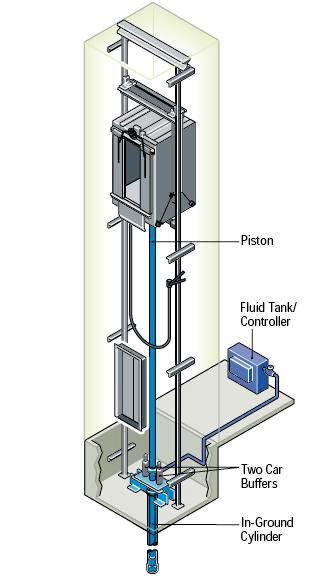
Hydraulic Elevator Illustration provides a visual representation of the sophisticated mechanics and technology behind hydraulic elevators. These elevators are renowned for their reliability and efficiency, especially in low-rise buildings. This article delves into the key components of hydraulic elevators, their benefits, and how illustrations can aid in understanding their functionality.
What is a Hydraulic Elevator?
A hydraulic elevator uses a hydraulic system to lift and lower the elevator car. Unlike traction elevators, which rely on cables and pulleys, hydraulic elevators utilize a piston driven by hydraulic fluid to move the car. This type of elevator is particularly suitable for buildings with fewer floors, typically up to six or seven, due to its smooth operation and cost-effectiveness.
Key Components of Hydraulic Elevators
- Hydraulic Cylinder: This is the core component of a hydraulic elevator. It contains the piston that moves the elevator car up and down. The cylinder is usually installed vertically or at a slight angle in the elevator shaft.
- Piston: The piston is the moving part within the hydraulic cylinder. It is driven by hydraulic fluid and supports the elevator car.
- Hydraulic Fluid: This fluid is pumped into the hydraulic cylinder to create pressure, which moves the piston and, consequently, the elevator car.
- Pump Unit: The pump unit, often located in the machine room, controls the flow of hydraulic fluid to the cylinder. It is powered by an electric motor.
- Control System: The control system manages the operation of the hydraulic elevator, including the opening and closing of doors and the movement of the elevator car.
- Safety Mechanisms: Hydraulic elevators are equipped with safety features such as emergency brakes and pressure relief valves to ensure safe operation.
Benefits of Hydraulic Elevators
- Smooth Operation: Hydraulic elevators provide a smooth and quiet ride, making them ideal for residential and low-rise commercial buildings.
- Cost-Effective: They are generally less expensive to install and maintain compared to traction elevators.
- Space Efficiency: Hydraulic elevators require less overhead space and can be installed in buildings with limited headroom.
The Role of Hydraulic Elevator Illustrations
Hydraulic Elevator Illustrations are invaluable tools for understanding how these elevators operate. They offer clear, detailed visual representations of the elevator’s components and mechanics. Here’s how illustrations help:
- Visual Clarity: Illustrations provide a visual guide to the various components and their functions, making complex systems easier to understand.
- Training and Education: For technicians and engineers, illustrations serve as educational resources, aiding in training and troubleshooting.
- Design and Planning: Architects and engineers use illustrations to design and plan elevator installations, ensuring all components fit correctly within the building’s structure.
Conclusion
Hydraulic Elevator Illustrations play a crucial role in demystifying the complex workings of hydraulic elevators. By providing a clear and detailed visual representation of the system, these illustrations help in understanding, maintaining, and designing hydraulic elevators. Whether you’re a building owner, technician, or architect, having a solid grasp of how hydraulic elevators operate through illustrations can enhance efficiency and safety in elevator maintenance and installation.
If you’re considering upgrading or installing a hydraulic elevator, understanding its components through high-quality illustrations can significantly benefit your decision-making process. For professional assistance and more information on hydraulic elevators, feel free to contact our team of experts at [Your Company Name].